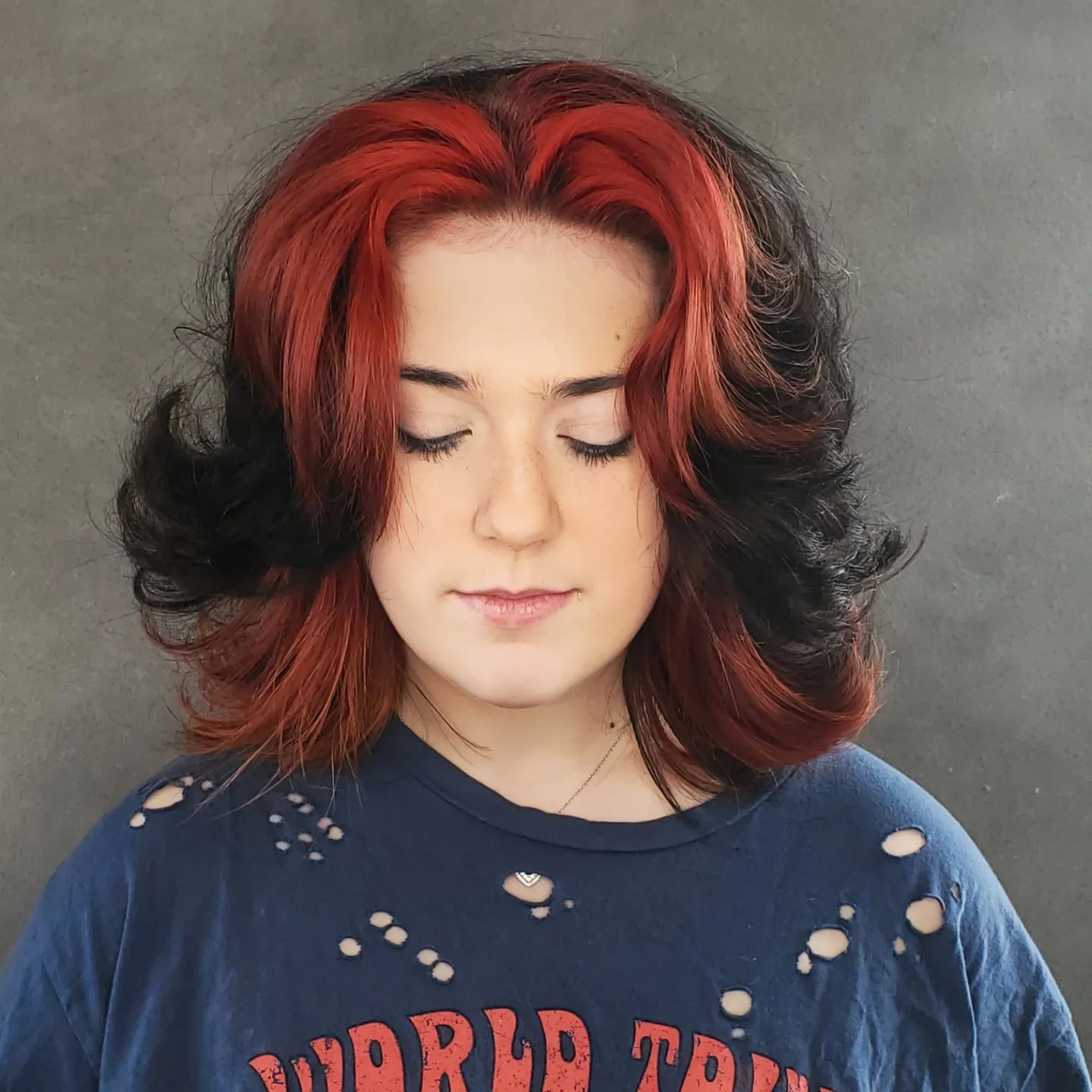We were lucky to catch up with Chloe Ammond recently and have shared our conversation below.
Chloe, looking forward to hearing all of your stories today. To kick things off, we’d love to hear about things you or your brand do that diverge from the industry standard.
I cater each step of my services to the client’s needs and wants. I put the client’s confidence and comfort over the conventional beauty standard or what would look best on social media. The most common thing I hear behind the chair is “Wow, I’ve never had a stylist really listen to me and do this with my hair!” I think it comes from my work in theatre and adjusting my techniques to the type of wig I’m working on. You can use a hot curling iron on a human hair wig, but not a synthetic one – it’s plastic, it will melt.



As always, we appreciate you sharing your insights and we’ve got a few more questions for you, but before we get to all of that can you take a minute to introduce yourself and give our readers some of your back background and context?
Yes, I am a hair stylist at Bradley Salons in Grand Rapids, MI! I actually got my start in theatre. Many hair and makeup designers start behind the chair, but not many stylists start as a designer. I grew up acting in local theatres, and in college I joined WMU’s theatre design program to focus on hair and makeup. I learned how to work with a large variety of wigs – actually, one of my favorite wigs I’ve done was from Spirit Halloween! I also got a lot of experience with special effects makeup. But after a while, I felt like something was missing. I have a true passion for using my skills to touch others and make the world a better place, and that’s hard to do when you’re sitting alone in a basement styling wigs or drawing makeup diagrams. So, I decided to pivot and go to beauty school. Although I still keep my love of theatre alive by acting in a murder mystery dinner party.
Beauty school and working in a salon is a perfect fit for me! I get to meet so many different people and help them feel confident in themselves so they have the courage to do anything. But it was an adjustment. In theatre, you’re thinking about how an audience several feet away will see it, but in a salon you’re thinking about how it will look in a mirror right in front of you. Also in theatre, you have a script that tells you everything you need to know about a character. You don’t have that in a salon – you have a build a relationship and trust with each client. Thankfully, I love people, so I love getting to know each and every client in my chair.
When I’m not behind the chair, I learn as many different techniques and styles as possible. It stems from my love of people – the more things I learn, the more diverse people I can touch with my work. I never want to turn someone away because I don’t know how to work with someone’s hair.


Can you tell us about a time you’ve had to pivot?
I have had to pivot numerous times in my life. I pivoted from acting to design because I was tired of my appearance dictating weither I got hired. No one likes to hear that your work is great, but you’re too short for a job. Then I pivoted from hair and makeup design to beauty school and working behind the chair. I believe pivoting is vital in the world we live in. Not just for business owners, but for everyone. If you’re unsatisfied with your life or work, find a way to pivot towards something that makes you feel fulfilled. However, I think people have a tendency to pivot 180 degrees towards the complete opposite of their current situation. You don’t have to do that. Take the things that work in your current situation, and just change the things that aren’t working.


Are there any books, videos, essays or other resources that have significantly impacted your management and entrepreneurial thinking and philosophy?
The book “Man’s Search For Meaning” by Victor Frankl has changed how I think about everything in life, not just work. I read it when I was in a very dark place, and it inspired me to pivot and enroll in beauty school. The book documents his life in the Holocaust, theorizes why some people were able to survive over others, and establishes his branch of therapy called Logotherapy. I fully agree with his statement “A man with a why can withstand any how.” The first half is tough to read because of the truly horrifying Holocaust stories, but it makes the second half so much more impactful and meaningful.
Contact Info:
- Website: https://linktr.ee/Chloe_Ammond
- Instagram: https://www.instagram.com/ammond_design/
- Facebook: https://www.facebook.com/p/Chloe-Ammond-Design-100082570286035/?paipv=0&eav=Afbh0tez3d43c-h-HdyAAFaOTHa89UR3eEXFxFIVMgoneLg3dbfM1M0cCvAyG4-fPEk&_rdr
Image Credits
Andrea Lane Photography


